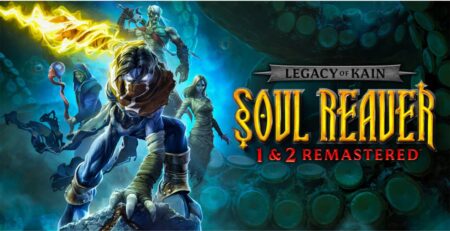‘Tiny Tina’s Wonderlands’ isn’t the first spin-off that the looter shooter series Borderlands has spawned, but very well could be the best. As a follow-up to the Borderlands 2 DLC, Tiny Tina’s Assault on Dragon Keep, Wonderlands abandons the traditional science fiction trappings of the series for a fantasy setting within the in-series Dungeons and Dragons knock-off Bunkers and Badasses.
Wonderlands keeps most of the franchise’s signature trappings, but the new fantasy setting allows for numerous impactful changes as well. The biggest of these are in relation to the player’s character. Rather than picking from one of four pre-made characters with three skill trees each, players are able to make their own from scratch. The character creator is impressively detailed, and players consistently get new cosmetic options as loot drops with a ton of variety.
Instead of picking just one class players are also able to combine two classes in a multiclass from six available in the game. Each one has a passive like increased damage of a certain type or a constant summon, two action skills like ground slams, and a medium-sized skill tree. This setup is a great way to mix up the usual Borderlands experience by letting players customize their experience and explore different synergies between the classes like focusing on summons, group damage, or stacking up kill skills.
The fantasy setting also mixes up the loot pool significantly. Not only have grenades been replaced with a variety of spells, but some guns look like crossbows, players can equip magic rings and amulets, and every character also carries with them a melee weapon. Any players of Borderlands 3 will recognize a lot of the weapons and mechanics but plenty of new ones have been added to keep things fresh as well.
The biggest benefit of the fantasy setting, however, is the locations and enemies that players come across. The map has tons of variety in it from forests of towering mushrooms to frozen mountains and dank swamps. They are each intricately given their own character while the cast of enemies is nearly entirely new to the game, bringing much-needed relief from the hordes of loader bots and psychos. These new enemies also come with unique mechanics and attack patterns, pushing players to adapt their playstyle for each region.
The location designs also take a surprising note from arena shooters like DOOM Eternal by having a more purposeful design with combat arenas. These are interspersed in bigger areas but appear most frequently in dungeons and random encounters as players explore an overworld map and they make Wonderlands’ combat more enjoyable than any other game in the series.
Tiny Tina’s Wonderlands also manages to be an improvement over its predecessor by actually being funny again. Many of the jokes, references, and characters in Borderlands 3 were more annoying than amusing, but Wonderlands boasts a much higher hit rate. However, there are still plenty of jokes that don’t quite land and the narrative itself leaves much to be desired, as do the new characters.
The game also fails to take advantage of its star-studded voice cast. Will Arnett does a decent but unremarkable job as the antagonist, while the likes of Wanda Sykes and Andy Samberg both seem to be barely interested in their lines at all.

There are also various improvements in the game’s presentation that have been remarkably improved upon. Borderlands 3 undoubtedly ushered in a new era for the franchise, but it still felt rigid in its facial animations and cinematic moments that weren’t quite moved far enough away from the more stripped-back style of Borderlands 2 and The Pre-Sequel. Wonderlands, however, is a lot more successful in making facial animations look natural without compromising on their visual style as well as having cutscenes and moments that play out naturally with unique flourishes when appropriate.
The game’s endgame also mixes things up by abandoning the franchise’s previous structure of repeating the game on harder difficulties, with a randomly generated dungeon system similar to rifts in Diablo 3. Each run comes with randomized modifiers that keep things fresh. The system works well enough thanks to how fun and kinetic the arena-based design and combat mechanics are when combined, but it could definitely use with another mode or two or more content to keep things fresh.
I was pretty skeptical of Tiny Tina’s Wonderlands when it was originally announced. Not only can Tiny Tina get grating, but the lackluster writing of Borderlands 3 and its questionable design decisions had me worried that its spin-off would waste its potential by repeating or even doubling down on those mistakes. However, Wonderlands manages to instead fix many of those issues while injecting new ideas to make it a special entry in the franchise thanks to more than just its setting.
Hopefully, the game’s season pass will only continue to polish it even more, and the developers at Gearbox will take the lessons from Wonderlands into the series’ future.
Tiny Tina's Wonderlands
-
Rating - 8/108/10
TL;DR
Wonderlands manages to instead fix many of those issues while injecting new ideas to make it a special entry in the franchise thanks to more than just its setting. Hopefully, the game’s season pass will only continue to polish it even more, and the developers at Gearbox will take the lessons from Wonderlands into the series’ future.




